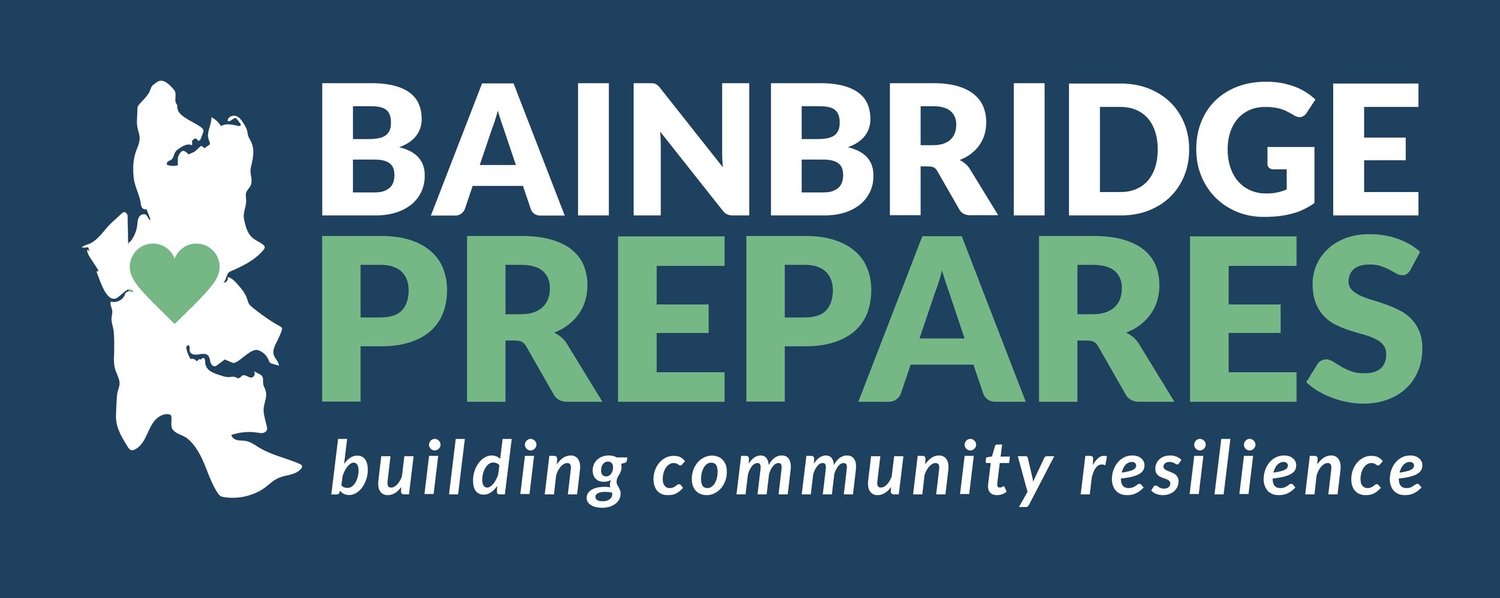Preparing for Climate-Related Disasters at Home
This year Bainbridge Prepares is teaming up with the City of Bainbridge Island Climate Smart Bainbridge Challenge to make your emergency preparedness more Climate Smart. What does that mean? It means taking climate change into consideration when you’re preparing your household for emergencies. The City’s Climate Smart Team has created recommendations for each month to match up with our Prepare in a Year 24 program.
This month, the Prepare-in-a-Year task is to create an action plan. So we’re highlighting the connection between climate change and the disasters we’re likely to face at home and focusing on the need to create an action plan that is climate smart.
Washington is susceptible to a variety of disasters, some of which are closely connected to climate change. The most significant changes projected for the Pacific Northwest due to climate change are the following:
Sea Level—increase in sea level. Bainbridge Island is anticipated to experience one foot of sea level rise by 2060 relative to the year 2000.
Temperature—increase in average and minimum temperatures and the frequency and duration of extreme heat events.
Precipitation—wetter winters, drier summers, more extreme precipitation events, and shifts in the timing of stream flow.
Wildfires—increased risk of wildfires and wildfire smoke exposure.
Mountain Snowpack—less snowpack (with implications for many off-island water supply systems).
Although many climate-related disasters are stand-alone events, the impacts of different changes can compound to create larger problems over time. For example, a wildfire one year can create an unstable environment that is more prone to landslides, flooding, and prolonged drought for years to come. So it’s important to take action to be climate smart all year. Here are some ideas:
Sea level rise: Are you on waterfront property? Prepare for short-term sea level rises during storm surges. For the long-term, consider protecting your household water source from damage and floodproofing your structures.
Temperature increases: Worried about the heat? Install an energy-smart heat pump, which can also cool air. Add window shades and awnings to your home. Plant shade trees.
Precipitation increase/decrease and mountain snowpack decrease: During the wetter months, collect rainwater to use for watering plants in the drier months.
Wildfires: Read about the Firewise program endorsed by the Bainbridge Island Fire Department to help protect your home.
Learn more about how you can prepare for climate-related disasters here.
Check back next month to learn more about sustainable tips for conserving and storing water.

